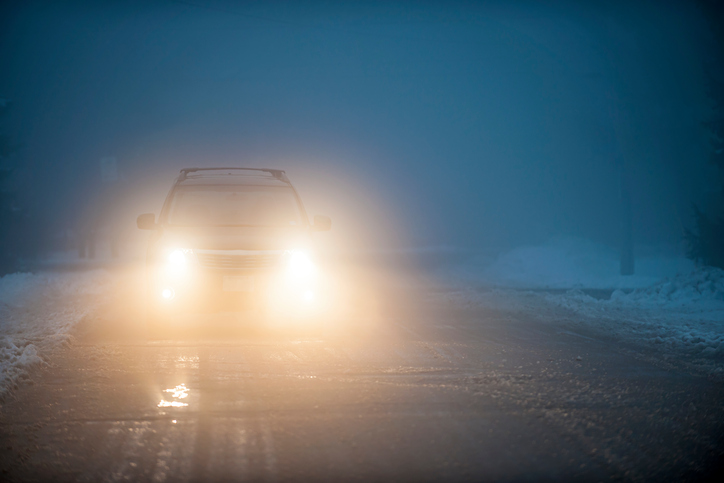To keep yourself and others on the road safe, you need to know when it is appropriate to use certain functions on your vehicle, like your headlights. This article comes from the Department of Motor Vehicle website.

When to Use Your Headlights
To stay and improve your visibility on the road, it's important to know when and when not to use your headlights.
Use this guide to learn more about safe headlight practices and common headlight laws.
Headlights During the Day
Most state headlights do not require the use of headlights during the day unless poor weather decreases visibility. However, using your headlights during the day regardless of the conditions can improve visibility and safety.
Here are a few instances when using your car headlights during the day can help you decrease chances of an accident:
- During adverse weather, such as:
- On rural and mountain roads
- On narrow two-lane highways
- When road signs indicate a daytime headlight zone
- Just after sunrise and just before sunset
- During these periods, it may be more difficult to see other vehicles. Turning on your headlights will also turn on your tail lights, reducing your chances of a rear-end collision.
When to Use High & Low Beams
When driving between sunset and sunrise, most state headlight laws will require you to use your headlights. At this point, you'll need to determine which lights are most appropriate for your specific environment: high beam or low beams.
High Beams
In some instances, using the high beam setting on your headlights will make it easier to see the road. If there are few or no streetlights on the road, high beams will help you see farther down your path, preventing you from hitting any animals or pedestrians crossing in front of you.
Always use your high beams according to your state headlights laws, such as:
- On rural or mountain roads.
- Be sure to switch off your high beams when you see an approaching vehicle. High beams make it difficult for other drivers to see the road.
- On open highways when no other vehicles are present.
Low Beams
You'll want to use the low-beam setting on your car headlights when:
- Poor weather limits visibility during the day.
- Driving in the fog or rain.
- Using high beams is more dangerous because of light reflection.
- City driving at night when short-range light is sufficient.
- Another vehicle is approaching in the opposite direction.
- Each state may require you to switch from high beams to low beams when you are within a specific distance from an approaching vehicle. Check your local headlight laws for more information.
- Road signs indicate a daytime headlight zone.
- Following another vehicle at night.
Tips for Using Your Headlights
Here are a few additional car headlight tips to help you stay safe and avoid a collision when driving at night or in adverse weather conditions:
- If an approaching vehicle is using high beams, keep your eyes on the right edge of your lane.
- Reduce your speed.
- Reaction time will be slower at night even when you use your high or low beams.
- If you notice your car headlights point in different directions, you may need to have them serviced.
- Clean the glass covering your headlights often.
- They can quickly become dirty or cloudy in the winter or rainy weather.
- Avoid sudden braking.
- Braking early over an increased distance will give the vehicles following you more time to react.
- Use your turn signals earlier when driving at night.
Click here to view the original article.